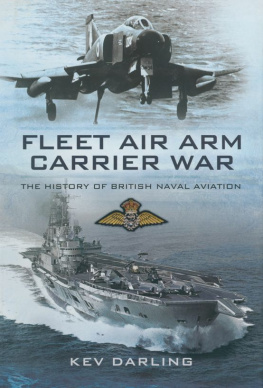Copyright Geoff Puddefoot October 30, 2009
First published in Great Britain in 2009 by
Seaforth Publishing,
Pen & Sword Books Ltd,
47 Church Street,
Barnsley S70 2AS
www.seaforthpublishing.com
British Library Cataloguing in Publication Data
A catalogue record for this book is available from the British Library
ISBN 13: 978-1-84832-046-8
PDF ISBN: 978-1-78346-593-4
EPUB ISBN: 978-1-78383-059-6
PRC ISBN: 978-1-78346-826-3
All rights reserved. No part of this publication may be reproduced or transmitted in
any form or by any means, electronic or mechanical, including photocopying,
recording, or any information storage and retrieval system, without prior permission
in writing of both the copyright owner and the above publisher.
The right of Geoff Puddefoot to be identified as the author of this work has been asserted
by him in accordance with the Copyright, Designs and Patents Act 1988.
Designed and typeset by M.A.T.S. Typesetters, Leigh-on-Sea, Essex
Contents
Acknowledgements and Preface
The author would like to acknowledge the help and advice of Captain Shane Redmond OBE RFA (Retd), Gordon Wilson, Martyn Hobbs, Captain C Puxley RFA (Rtd), David Soden, George Mortimore, and all of the serving and former members of the RFA, too numerous to name individually, who took the time to supply information and anecdotes, without which this book would not have been possible. Grateful thanks are also due to Commodore R C Thornton, CBE, RFA (Retd), for his contributions on pages xxxxx and for which he retains the copyright.
Especial thanks are due to Roger Jordan, who provided much essential, additional information about the various ship classes.
I would also like to acknowledge the help of both Bexley Library Services and Dartford Library Services staff and the staff at the National Archive and the National Maritime Museum.
In any book on as extensive a subject as the Royal Fleet Auxiliary, the problem is not so much what to include as what to leave out from the vast amount of material the subject encompasses.
I have therefore chosen to include predominantly material, information and personal accounts that reflect the character and development of the service, rather than introducing strictly technical matters that have been dealt with exhaustively elsewhere.
This probably means that some areas are less well and fully documented than would otherwise have been the case. It is, however, my hope that the extensive reference section will serve as an adequate guide to those whose researches require more depth of knowledge than they find available here.
Introduction
Logistic supply has always presented the Royal Navy with one of its major problems and the way in which solutions were developed in the years before the Second World War and during that conflict marked the beginnings of an afloat replenishment service for the Royal Navy.
Postwar changes, however, although in many ways more subtle, were just as significant, and were concerned, among other things, with the loss or change of status of most of Britains overseas holdings and the contraction of the Royal Navy, both in terms of ships and personnel.
Although naval vessels were tending to become smaller, these were much more complex, with increasingly powerful weapon systems. These changes were particularly reflected in areas such as detection systems and communications as well as, with a serious cold war situation developing, the need to deploy nuclear weapons aboard both surface ships and submarines.
Alongside this naval evolution, changes, of necessity, occurred in the way that logistic support had to be delivered, resulting in the appearance of RFA ships equipped in ways which could never have been imagined, even as late as the 1930s. And with improved ships came improved training and an RFA whose personnel are well able to take care of the Royal Navys demands, no matter what they are, anywhere, any time and in any weather.
Because one thing did not and has not changed:
R F A still means:
Ready For Anything.
Chapter 1
Postwar Changes and the New Tide Class (195059)
The service that emerged from the devastation of the Second World War was almost unrecognisable from that which had entered the conflict.
Fundamental technological changes, such as replenishing both fuel and stores while at sea had taken place, changing what had been predominantly a freighting service into a much more professional organisation, beginning to be capable of supplying all the Navys requirements in an afloat capacity.
Technological change was to become one of the main characteristics of the RFA post war, along with a clear realisation of the demands that such changes made on personnel. Royal Navy thinking in some quarters had even begun to consider a service based on the US plan, whose auxiliaries in the Pacific Fleet train, for example, had been commissioned into the United States Navy, thus achieving a parity of command, pay and conditions for all men serving in the Pacific war zone (see, eg, Naval Review 1950).
The first real signs of this new style RFA were the addition, in 1954, of the early Tide class replenishment tankers to the fleet.
Admiralty designed, these were large, fast ships, built to remain at sea for long periods in all conditions. Construction was of a standard more reminiscent of a warship than a commercial tanker, with, for example, three boilers and engine room remote controls, constructed of stainless steel, for use in the event of a nuclear attack. This innovative design also owed much to Royal Navy experiments with HMS Bulawayo, which was a captured German fleet oiler.
Furnace fuel oil (FFO), aviation spirit (AVCAT), aviation gasoline (AVGAS) and diesel (DIESO) were carried in separate tanks, with their own dedicated pumps and sufficient power to allow all these pumps to be used while steaming at fifteen knots. Three of the new jackstay systems with steam driven, self-tensioning winches were fitted, along with five large derrick rigs. They also had the capability of streaming three hoses astern, specifically for use with aircraft carriers. These new developments meant that the Tide class vessels could easily replenish three vessels at once, even if one of them was an aircraft carrier.
Acquisition of these new Tide class vessels marked a turning point for the service which was, in some ways, as significant as the changes which were implemented after the Falklands. They were far in advance of any vessel the RFA was using up to that time, in terms of both technology and performance but what is not generally known is that they were nearly never built at all because the Admiralty, despite a well-publicised stance on modernisation, could not, or perhaps rather, declined to find enough money from the Navy Vote to pay for them!
The story of the search for a fast fleet replenishment tanker began in August 1950, when a meeting took place in the Admiralty between representatives of the Royal Navy and the Department of Transport to discuss a proposal that had been brought to them by Simpson, Spence & Young, a firm of London shipbrokers.
In simple terms, its proposal was that four ship owners, that the brokers represented, would each undertake to build a fast fleet replenishment tanker to Admiralty specification. It would have a total deadweight of 17,500 tons, later increased to 20,000, a speed with clean bottom in still water in excess of eighteen knots and carry all the necessary gear to conduct extensive replenishment activities. These ships would be chartered like normal tankers in peacetime, but in the event of war, they would be returned to the Admiralty and operated as fast fleet replenishment tankers.












